"India and Africa in South America." How Guyana went to independence and what is a “cooperative republic”
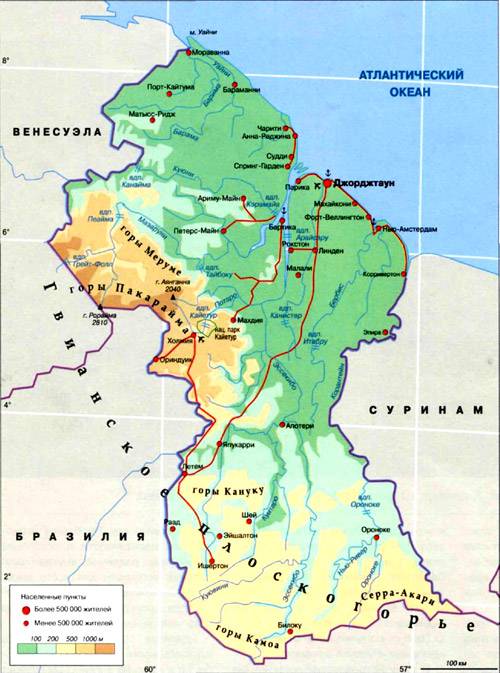
Before European colonization of the land of Guyana, the tribes were inhabited by Carib Indian tribes, the Arawaks. When the Spaniards discovered the coast of Guyana at the end of the 15th century, it did not initially attract them - swampy, hard-to-reach places, jungle. Only at the beginning of the 17th century did the Europeans begin to develop the territory of Guyana - but not the Spaniards, but the Dutch. In 1616, they built the first trading post. In 1648, the right of the Netherlands to own the lands of modern Guyana was confirmed by the Münster Peace Treaty. Over the years 170 there existed a colony of Essequibo (by the name of the river), subordinate to the Dutch West India Company. The second colony, also owned by the Dutch West Indies Company, appeared on the Berbys River and was given the same name. Another colony was established on the river Demerara.
Gradually, the Dutch moved from the trade with Indian tribes to the development of the lands of the colonies of Essequibo and Berbys for their agricultural use. Plantations were created, to work on which required numerous slaves. The Indians on the plantations could not work, so began the massive importation of African slaves. By the second half of the 17th century, slaves brought from West Africa became the main labor force of the colony. They also gave rise to the African substrate of the population of Guyana. Repeatedly, slave rebellions broke out against Dutch planters, to pacify which the Netherlands even requested the help of competitors — France and Great Britain. The largest of these was the Berbis uprising in February of 1763, which was raised by a man named Cuffy (today he is honored in the country as a hero of the national liberation struggle). Many slaves escaped into the jungle, where they created settlements of “forest blacks”, in which a unique culture was formed, combining the West African base with layers of borrowing from the Indian population.
In 1746, in order to increase the flow of settlers, the Netherlands allowed British citizens to settle in the Demerara River area. However, this decision was very rash - by the time of 1760, the British made up the majority of the white population of Demerara. In 1781, the war of Great Britain and the Netherlands began. The colonies of Berbys, Essequibo and Demerara were captured by British troops. True, the Dutch soon regained control of the colonies. Then the British reoccupied Berbys, Demerara and Essequibo - from 1796 to 1802, and in 1814, according to the Anglo-Dutch Convention, the colonies were transferred to Great Britain. In 1831, a colony of British Guiana was created by combining the colonies of Berbys and the United Colony of Demerara and Essequibo.
The power in British Guiana was actually in the hands of a small stratum of European planters who influenced the policies of governors appointed by British monarchs. After the abolition of slavery in the British colonies, planters were faced with the question of the need to replace African slaves in agricultural plantations. Moreover, many Africans, having received freedom, did not want to work on the plantations anymore, and rushed to the cities, where some took up trade, and the majority turned into factory workers or lumpen. For work on the plantations, it was decided to bring the hired workers under the contract. First, Portuguese colonists from Madeira Island were invited to British Guiana. But most of the Portuguese who arrived did not work on the plantations, but engaged in trade. Then there was an unsuccessful attempt to bring Chinese to work on the plantations. 1853 to 1914 14 brought thousands of Chinese workers to British Guiana. But they also abandoned plantation labor and, again, concentrated in the field of trade. The inability to meet the needs of the plantations in the workforce was seriously disturbed by the British authorities, as there was a bleak prospect in front of the colony of a significant reduction in sugar cane production. Therefore, to work on the plantations began to attract Indians.
The colorful ethnic composition of the population of British Guiana, which became much more complicated after the importation of the Portuguese, Chinese and Indians, led to the appearance of inter-ethnic contradictions in the colony. First, the Portuguese from Madeira demanded equal rights with the British and the Dutch, who had long lived in the colony. Secondly, the Afro-Guyanese, who also considered themselves deprived, were increasingly claiming their rights. The First World War contributed to strengthening the political identity of the black population of British Guiana. In 1915, the 2th West Indies Regiment of the British Army was formed, which also included units staffed by immigrants from British Guiana. The vast majority of colonial soldiers were black. Upon returning to their homeland, they, who shed blood for the interests of the British Empire, considered it fully justified to demand greater rights and participation in the administration of Guiana.
In 1917, the British authorities were concerned about the situation on the plantations. They considered that a large number of Indian workers constituted a danger to the social order of the colony, especially since in the British India at that time the national liberation movement was gaining popularity. The practice of concluding contracts with Indian workers was discontinued, but a huge number of Indians remained in British Guiana. They also gradually began to form political groups and claim their rights. The economic crisis of 1930's led to a series of major riots and clashes throughout the British West Indies. Not an exception and British Guiana. In post-war British Guiana, the first political parties appeared. 1 January 1950 was founded by the People’s Progressive Party of Guyana (NPPG), and in 1957, the People’s National Congress (NOC) was separated from it.
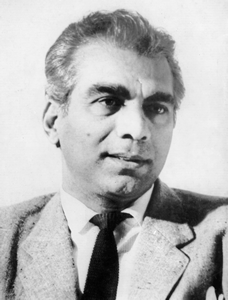
The young politician Cheddi Jagan (1918-1997) stood at the origins of the People’s Progressive Party of Guyana, which was guided by Marxist ideology. He came from among Indian plantation workers — the eldest of eleven children in a large family. Despite his low social background, Cheddi Jagan was distinguished for his remarkable intellect and was able not only to graduate from school and college in Georgetown, but also to get an education in the US - Howard and Northwestern Universities (from 1936 to 1942), where he received a dentist specialty. However, Jagan gained fame not as a dentist, but as a politician. Already in 1945, he headed the Union of Colored People of British Guiana and the trade union of the woodworking industry, and in 1947 he became a member of the Legislative Council of British Guiana. According to his political views, Cheddie Jagan was in the radical left positions, so the party he created proclaimed itself Marxist and headed for socialist reorganization of life in British Guiana.
An important role in the organization of the party was played by Cheddy Jagan's wife, Janet Rosalie Jagan-Rosenberg (1920-2009). Born in Chicago (USA), Janet was born into a wealthy Jewish family, which did not prevent her sympathy for Marxism. In 1943, she married Cheddy Jagan, whom she met while studying last in the United States. After moving to British Guiana, Janet worked as a nurse for ten years, and from 1950 to 1970. served as secretary general of the People’s Progressive Party of Guyana. The activities of the Jagan spouses caused discontent of the British colonial authorities, despite the fact that support for the Popular Progressive Party in the society was growing. After universal suffrage was introduced in the colony, the NPPG won in the 1953 elections.
However, the party's attempts to intervene in labor relations led to a sharply negative reaction from London. Troops entered British Guiana, internal self-government was abolished. Caddy Jagan in 1954, even spent several months in prison on charges of communist propaganda. However, the Popular Progressive Party won again in the 1957 elections. However, by this time there was an internal split in the ranks of the party. The Cheddi Jagan faction relied on the Indian population, while its opponent Lyndon Forbes Burnham (1923-1985) enjoyed the support of the Afro-Guyanese population. Forbes Burnham came from a family of wealthy Guyanese of African descent and received a law degree from the University of London. His political positions were then more moderate than those of Jagan. Under the leadership of Burnham was formed the National Congress of the People.
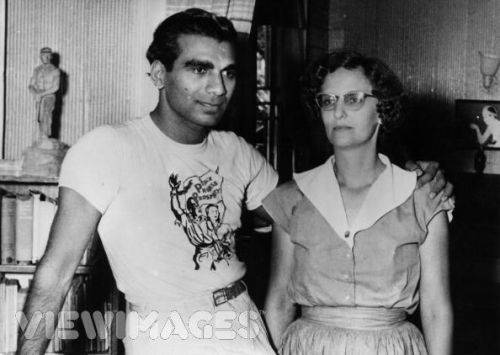
Cheddie and Janet Jagan
In the meantime, Cheddie Jagan is noticeably leveled. He declared his sympathies for Mao Jedadun and Fidel Castro, advocated the nationalization of foreign property. In 1961, the NPPG won the election, Cheddie Jagan took over the post of Prime Minister of British Guiana introduced in the same year. He began to develop relations with Cuba, held talks with Ernesto Che Guevara, which ended with the help of Cuba from British Guiana, and also concluded trade agreements with Hungary and the GDR. But Jagan’s policy was discontent not only with the British administration, but also with the African population of British Guiana itself, which was concerned about the concentration of power in the hands of the Indians. In the 1964 elections, the NPPG Jagan suffered a defeat.
14 December 1964 Mr. Forbes Burnham became Prime Minister of British Guiana. He broke off relations with Cuba and reoriented to the West. It is likely that it was these steps that helped British Guiana gain independence. In London, they saw that the economic situation in the country had stabilized, and Burnham did not differ by pro-Soviet sentiment.
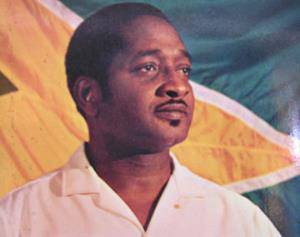 25 May 1966, British Guiana gained independence under the name of Guyana. After that, the political position of Forbes Burnham (in the photo) began to change rapidly. In 1968, having won the election, he announced that the country was headed for the socialist path of development. 23 February 1970 Guyana proclaimed itself the Cooperative Republic. The British Queen has ceased to be considered the formal head of state, the post of governor-general was abolished. Forbes Burnham took over as president of the country. After that, Guyana joined the Non-Aligned Movement, and Forbes Burnham in August 1972 made a fiery anti-imperialist speech about the need to fight against colonialism. He gave permission to Cuban troops to use the territory of Guyana as a transshipment base for transporting Cuban troops and cargo to Angola.
25 May 1966, British Guiana gained independence under the name of Guyana. After that, the political position of Forbes Burnham (in the photo) began to change rapidly. In 1968, having won the election, he announced that the country was headed for the socialist path of development. 23 February 1970 Guyana proclaimed itself the Cooperative Republic. The British Queen has ceased to be considered the formal head of state, the post of governor-general was abolished. Forbes Burnham took over as president of the country. After that, Guyana joined the Non-Aligned Movement, and Forbes Burnham in August 1972 made a fiery anti-imperialist speech about the need to fight against colonialism. He gave permission to Cuban troops to use the territory of Guyana as a transshipment base for transporting Cuban troops and cargo to Angola.Guyana’s development strategy proclaimed “cooperative socialism” based on the communal traditions of the peoples of the country. This concept involves working together for the benefit of society, people's participation in the exploitation of natural resources and the management of the economy. The main units of society were supposed to be cooperatives, created in various sectors of the economy and, above all, in agriculture, manufacturing and trade. Cooperatives carried out construction of infrastructure facilities, created new enterprises and farms. Free medical care was introduced in Guyana; secondary and higher education also became free.
In domestic politics, Burnham set a course for self-sufficiency in the Guyanese population solely at the expense of domestic resources. However, in Guyana society, internal contradictions were growing, connected with the confrontation of Afro-Guyanese and Indians - the main groups of the country's population. The most scandalous events of modern history were the death of 900 people in Johnstown - in the "Temple of Nations" - an agrarian commune of a sectarian sense, as well as the death of the popular left politician Walter Rodney in an explosion in a car.
The era of Burnham's power ended unexpectedly - 6 August 1985, he died suddenly. Afro-Guyanese lawyer Hugh Desmont Hoyt (1929-2002) became president of the country. In 1990, he announced Guyana’s refusal to follow the socialist development path. In 1992-1997 Caddie Jagan was the president of NPPK, and after his death in 1997-1999. the country was led by his widow, Janet Jagan. Like her husband, she tried to pursue a policy aimed at reducing interracial contradictions, improving the social position of Guyanese.
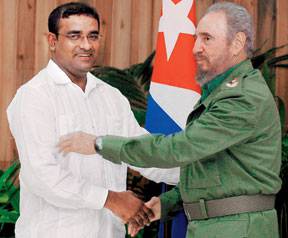 1999 to 2011 The presidency of Guyana was held by the representative of NPPK Bharrat Jagdeo (born 1964) - a graduate of the Faculty of Economics of the Peoples' Friendship University. Patrice Lumumba, a socialist and proponent of Marxist-Leninist views. In the photo he is with Fidel Castro. Despite the liberalization of the economy, Jagdeo tried to maintain relations with Guyana’s old friends, above all with Cuba.
1999 to 2011 The presidency of Guyana was held by the representative of NPPK Bharrat Jagdeo (born 1964) - a graduate of the Faculty of Economics of the Peoples' Friendship University. Patrice Lumumba, a socialist and proponent of Marxist-Leninist views. In the photo he is with Fidel Castro. Despite the liberalization of the economy, Jagdeo tried to maintain relations with Guyana’s old friends, above all with Cuba. 2011 to 2015 The post of President of the country was also held by the representative of the NPPG Indian Donald Rabindranath Ramothar (born 1950). However, in the early presidential elections in 2015, a representative of the Afro-Guyanese population and a member of the People’s National Congress, retired brigadier David Granger (born 1945), the former commander-in-chief of the Guyanese armed forces in 1979-1990, won. Guyana is currently seeking to maintain good relations with all the major powers. Thus, Guyana has a visa-free agreement with Russia - citizens of the Russian Federation have the right to enter the country without a visa for a period of 90 days. On the other hand, Guyana is working closely with the United States, counting on support in the confrontation with neighboring Venezuela, with which the country has long-standing territorial disputes.
Information